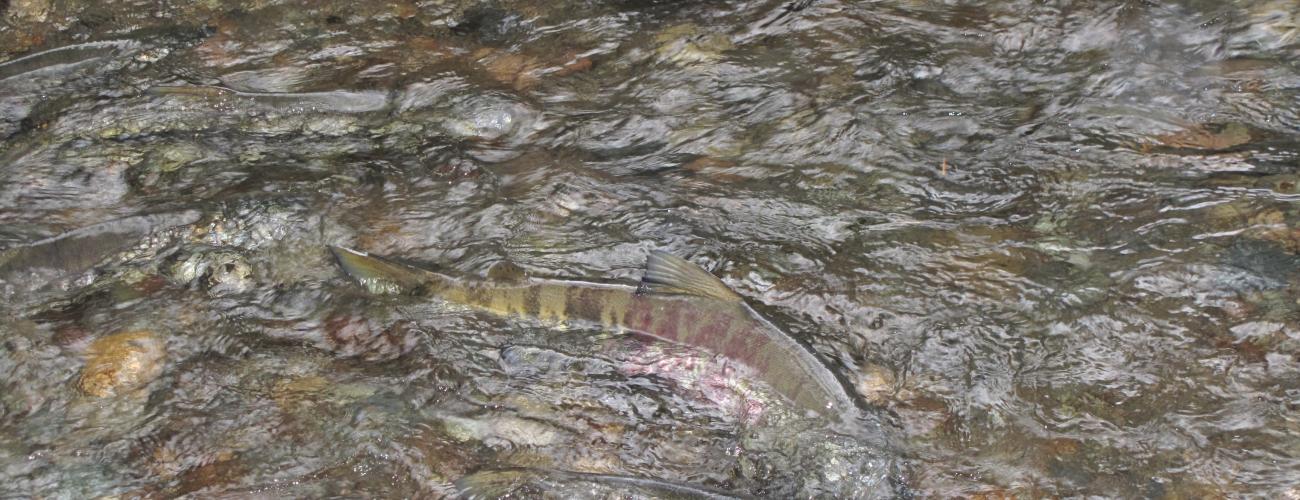We're updating our camping and moorage fees to continue providing great experiences for visitors amid inflation and rising costs. You will see a rate increase for camping stays booked for May 15 and beyond. Moorage fees will increase Jan. 1. Learn more here.
Natural Resources
Current efforts include addressing sensitive species conservation, forest health conditions, controlling invasive species, and collecting resource inventories while supporting applied research and strategic planning. To advance this work, natural resource scientists and managers work directly with park staff, sister agencies, non-profit conservation organizations, and volunteers.
Salmon recovery
Nearly every state park in Washington features a body of water – a river, lake, Puget Sound, or the Pacific Ocean.
Pacific salmon, one of our most treasured and important fish species, use these waters to spawn, hatch, grow and then migrate to the ocean to mature before returning to freshwater to complete their life cycle. To complete their life cycle, salmon need access to freshwater in many different habitats. Salmon require clean, cold water, spawning beds, food and adequate stream passage conditions to survive the rigors of their fascinating life cycles.
Loss of habitat, over-fishing, pollution and climate change threaten the survival of these amazing animals. We partner with a wide number of stakeholders to advance salmon recovery in Stat parks, where salmon habitats are impaired.
Current projects include, removing fish passage barriers, like culverts, tide gates and weirs. Improving near shore habitat by removing creosote bulkheads and rip rap from the shoreline. Installing log jams on rivers for channel stability, which optimizes fish passage and spawning conditions
For additional information email the salmon recovery team.

